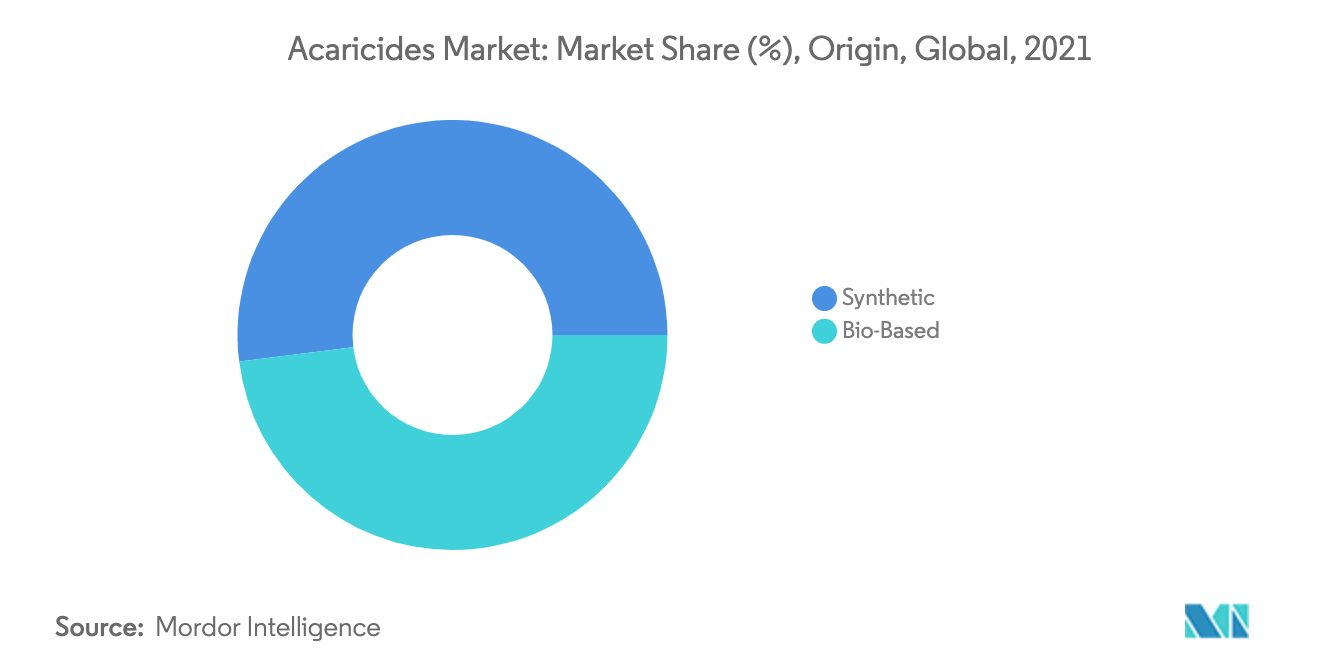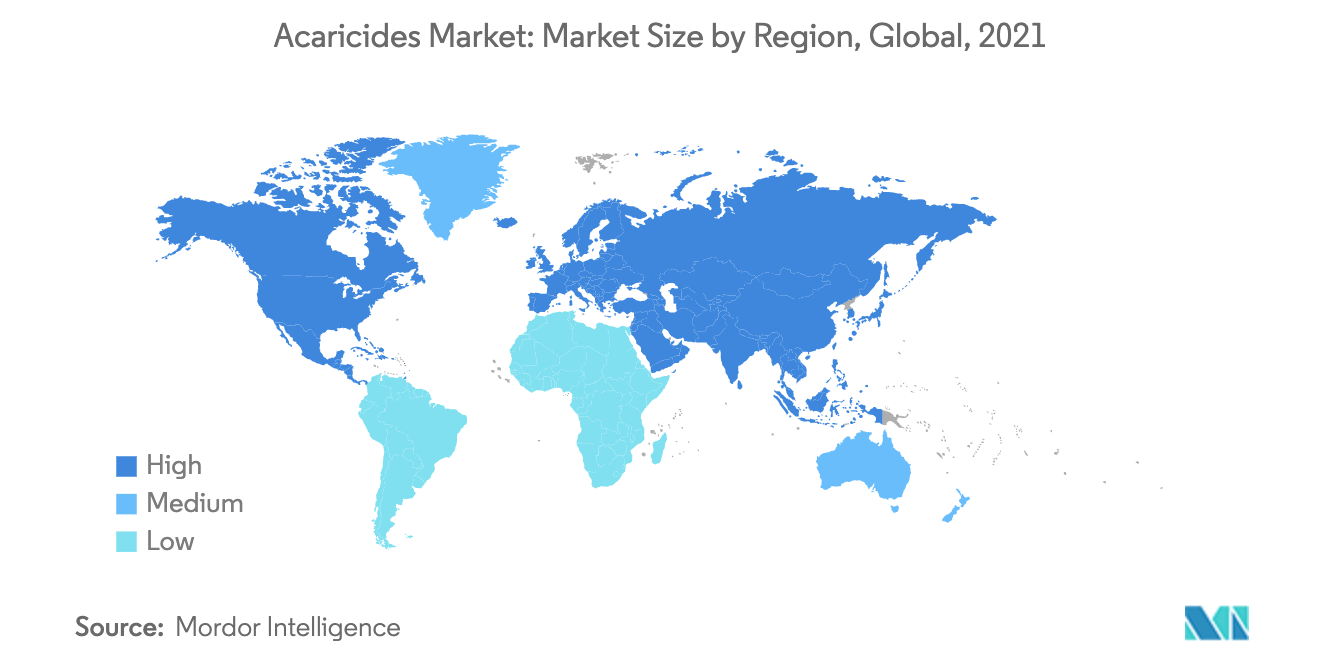Market Trends of Acaricides Industry
This section covers the major market trends shaping the Acaricides Market according to our research experts:
Increasing Demand for Natural Products
With the rising environmental concerns and increasing area under organic farming, the demand for natural crop protection products has significantly increased worldwide. The use of botanical insecticides in agriculture also increased. According to FAO, in Germany, the agricultural use of botanical insecticides increased to 25 ton in 2019 from 15 ton in 2018. Also, in Malaysia, the agricultural use of botanical and biological insecticide in 2019 was 101 metric ton. The growing demand for natural products from agricultural producers to treat their crops has led the companies to introduce bio-based products in the market. For instance, in February 2020, Oro Agri launched its new insecticide/acaricide, Oroganic, at HortiContact in Gorinchem, in the Netherlands. The Dutch Board recently approved this plant protection product for the Authorization of Plant Protection Products (CTGB). It is based on orange oil, an active substance of natural origin. It is a phytosanitary product obtained from 6% orange oil, with insecticidal, acaricidal, and fungicidal properties. It fights diseases and pests such as powdery mildew, mildew, or thrips efficiently and sustainably. Later, in March 2020, a biotech company Idai Nature reached an exclusive distribution agreement with the South African company Oro Agri to commercially develop its registered natural product, OROCIDE, in Spain.

Asia-Pacific Dominates the Acaricides Market
The agricultural industry in the Asia-Pacific region is evolving rapidly, and China and India are the major consumers of acaricides. Conventional insecticides or acaricides are extensively used to control sucking pests, but most of them have failed due to lower efficacy and the development of high folds of resistance. Red spider mites are considered a major pest in China, causing considerable losses over the years. They have overlapping generations, a strong reproductive capacity, small insect bodies, and high insecticide resistance, making them difficult to control. In 2020, Chengdu Newsun Crop Science Co. Ltd launched its novel and innovative botanical acaricide, 'Marvee,' to control red spider mites. Similarly, in India, many sucking pests, including mites, cause damage by direct feeding. Most of them also act as vectors for several plant pathogenic viruses, particularly in vegetables. To address these challenges, the leading agrochemical company Insecticides (India) Limited (IIL) launched 'Kunoichi' in 2019. It is a miticide that is effective at all stages of the mite. Kunoichi comprises Cyenopyrafen 30% SC, and it was developed by Nissan Chemical Corporation, Japan. IIL is the Indian partner of Nissan Chemical Corporation, Japan, for marketing its products.


